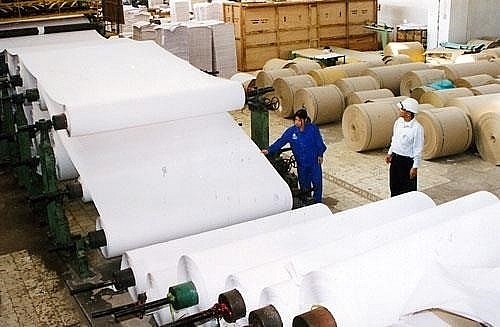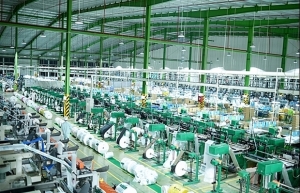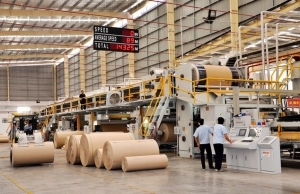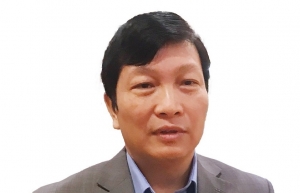Pulp and paper manufacturers tangle with approach to emissions inventories
At a training workshop earlier this month on greening the paper sector in Hanoi, organised by the Ministry of Natural Resources and Environment’s (MoNRE) Department of Climate Change (DCC) together with Japan International Cooperation Agency, hundreds of questions from manufacturers were sent to the organising board over how to approach effective tools for greenhouse gas (GHG) emission mitigation and inventories.
The most common concerns were the investment cost for segments such as solar power rooftops; the time to recoup the capital; and types of coal to save energy with low emissions. The pros and cons of biomass electricity, an alternative for fossil fuels, were also discussed.
The workshop found that firms have little knowledge of GHG inventories, and do not know whether they can build up their reports on inventories or get support from intermediate parties. They also have questions on how to determine direct and indirect emission sources from their facilities and how to collect enough data.
 |
| Capital shortage has been a headache for local paper manufacturers (Photo: VNA) |
Pulp and paper manufacturers expect a specific guide on GHG inventories and international experience from pioneering manufacturers on financial and technical barriers during the process.
Lack of knowledge may impact the progress of reporting GHG emissions data to the Ministry of Construction. According to current regulations on such emissions and protection of the ozone layer, cement manufacturers had to submit GHG emission data before April this year so that the ministry could conduct GHG inventory figures to cover 2022. From 2024, businesses will be responsible for this work every other year.
According to Decision No.01/2022/QD-TTg on sectors and establishments emitting GHGs subject to inventory, 69 pulp and paper facilities in Vietnam must implement such an inventory.
Dang Hong Hanh, a technical expert from the Support for Planning and Implementation of the Nationally Determined Contributions in Vietnam, said implementing and reporting GHG emissions inventory is a new obligation and goes beyond normal business operations.
“Previously, they just had to make a report about energy usage, which was much simpler compared to emission inventory – which requires a certain level of technical understanding. Therefore, enterprises will certainly face many difficulties in the first few years of implementing this work, in terms of technical capacity and lack of trained personnel,” Hanh said.
GHG inventory in terms of the pulp and paper sector is required to be implemented drastically because it is one of the most energy-intensive industries. In Vietnam, 96 per cent of facilities in this sector are small or medium in size, raising concerns about emissions, Hanh said.
Furthermore, these manufacturers face reputation damage if the companies do not change to a more sustainable path.
The pulp and paper industry is among the top five most energy-intensive industries globally and is the fourth-largest industrial energy user. This industry accounts for approximately 6 per cent of global industrial energy use and 2 per cent of direct industrial CO2 emissions, according to the International Energy Agency.
By 2022, Vietnam’s paper industry had more than 500 manufacturing enterprises: over 20 large-scale enterprises account for 65 per cent of paper output and almost 500 small- and medium-capacity enterprises account for approximately 35 per cent of output, cited the Vietnam Pulp and Paper Association.
The production capacity of the whole industry in 2022 reached about 8.2 million tonnes. Actual production capacity was 5.7 million tonnes and the consumption quantity is 6.8 million tonnes, raising concern about environmental pollution.
Luong Quang Huy, head of the GHG Emission Reduction and Ozone Layer Protection at the DCC said, “In order to support manufacturers in GHG inventories progress, the MoNRE is completing circulars on technical regulations for measuring, reporting, and appraising emission reductions and related inventory. We have completed a circular for the waste management sector, and circulars for many other sectors will also be promulgated soon.”
 | Paper, packaging firms see bright prospects ahead Paper and packaging enterprises are optimistic about their prospects this year thanks to Vietnam's stable business situation. |
 | SCG Packaging to invest $355 million into new packaging paper complex in Vietnam SCG Packaging (SCGP), Thailand's largest packaging solutions provider under the conglomerate Siam Cement Group (SCG), announced today that it will inject VND8.13 trillion ($353.48 million) into a new packaging paper complex in the northern province of Vinh Phuc. |
 | The favourable factors for FDI in the paper industry The trend of Asian countries such as Japan, South Korea, and China investing in the paper industry is set to continue. Vietnam Pulp and Paper Association general secretary Dang Van Son spoke to VIR’s Van Nguyen about future industry developments. |
What the stars mean:
★ Poor ★ ★ Promising ★★★ Good ★★★★ Very good ★★★★★ Exceptional
Related Contents
Latest News
More News
- Dat Bike accelerates sustainable mobility (January 07, 2026 | 15:24)
- Innovation to support modern healthcare development (January 07, 2026 | 10:00)
- Six localities record double-digit growth as regional performance diverges in 2025 (January 06, 2026 | 18:00)
- E-commerce market undergoes transformation amid rising competition and regulation (January 06, 2026 | 17:54)
- Vietnam’s industrial output hits seven-year high in 2025 (January 06, 2026 | 17:47)
- GELEX’s credit rating outlook upgraded to 'Positive' by VIS Rating (January 06, 2026 | 16:49)
- Finance sector lays firm groundwork for 2026 after major reform (January 06, 2026 | 15:30)
- Vietnam’s seafood exports surpass $11 billion in 2025 (January 06, 2026 | 08:51)
- Vietnam GDP posts second-strongest growth since 2011 (January 06, 2026 | 08:35)
- Double-digit GDP growth within reach with shift to higher-value expansion (January 06, 2026 | 08:33)

 Tag:
Tag:




















 Mobile Version
Mobile Version